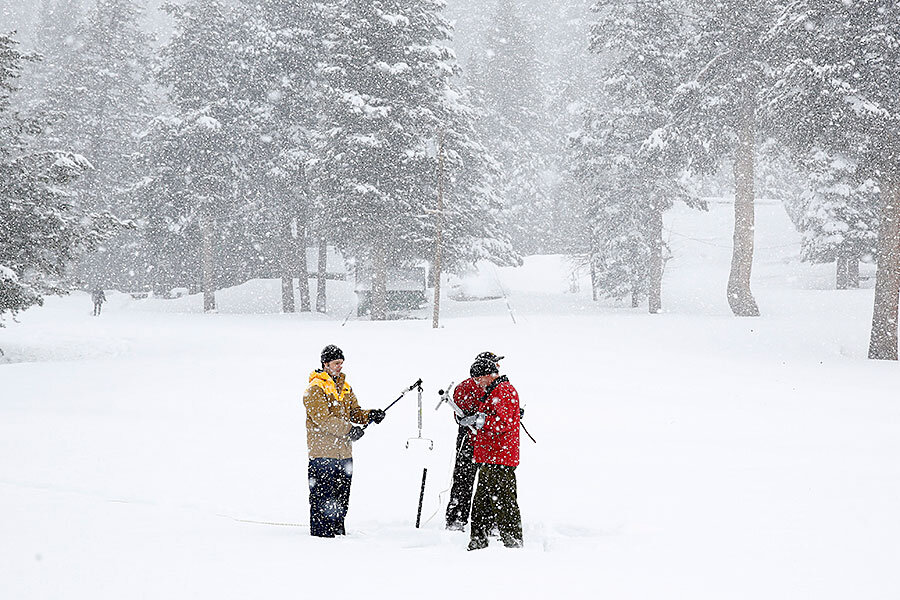Is the end in sight for California's drought?
Loading...
California has lately been the grateful recipient of a barrage of rainstorms, courtesy of a near-record El Niño event, prompting some to wonder if the drought that has stricken the state these past four years is coming to an end.
Yet state officials released figures Tuesday showing that California had missed its water-conservation target in December, reducing water use by 18 percent instead of the proposed 25 percent.
There was sunnier news, however, when considering average figures for the past seven months: in that case, California has exceeded its goal, reducing water consumption by 25.5 percent.
So, what is actually happening, and what is the prognosis for the future?
"We're at halftime," said State Water Resources Control Board chair Felicia Marcus. "We're not doing too badly, but we certainly haven't won the game yet."
Indeed, there was an expectation that water reduction would suffer during the winter months, according to the board’s press release, when there is less water use anyway and less opportunity to reduce the heavy outdoor use of the summer.
“Nonetheless, Californians are urged to keep up their efforts to conserve through the winter months,” the statement added.
There is no doubt that this year’s El Niño is also helping address the state’s worst drought in recorded history.
To cite some specifics, the Folsom reservoir that supplies Sacramento suburbs rose 28.5 feet in December. More spectacularly, as reported by National Geographic, the Sierra Nevada snowpack, which was at a 500-year low, had already reached 103 percent of its average by the beginning of January.
It is now at 113 percent, and when compared to the record low of six percent of normal volumes at the end of last winter, this is heartening news.
The importance of the Sierra Nevada’s snowpack is hard to overstate, for if temperatures are cool enough, the precipitation gifted by El Niño will fall as snow and then gradually melt and refill reservoirs.
Lake Tahoe drank in 100 millimeters of rain just in the first week of January. Ski slopes have opened for the first time since 2011 at Mount Waterman.
The number of people with flood insurance in California has leapt by 12 percent over recent months, The Economist reports, and yet this statistic itself reveals something of the nature of California’s situation, and why the current flurry of rainfall will alone be insufficient.
When land is cracked and devoid of moisture, torrents of rain are not easily absorbed. Instead, they cascade across the surface, bringing floods and mudslides in their wake.
If the drought had been short-lived, then a period of heavy rains, as we are witnessing now, would likely solve the problem.
But the Golden State has been starved of its water for four years, enough time to entrench the conditions and make an easy fix an unlikely prospect.
Nonetheless, as reported in Drought Scape, newsletter of the National Drought Mitigation Center, the wet weather is helping.
“The top layer of soil moisture has been replenished, and reservoirs have captured some runoff. If this wetter-than-normal pattern continues, drought will improve.”
What will it take for this promising start to turn the tide and lift California from its drought?
The state’s residents need to continue exactly what they’re doing, meeting those water-use reduction targets.
And the rain and snow need to carry on, the temperatures in the mountains need to stay nice and cool, and the precipitation needs to fall in the right places. Perhaps this is much to ask, but the signs are auspicious.
“Barring an unprecedented final three months of the snow season, it will likely take more than one wet winter to make up the deficiency that has accumulated over the past 3-4 years,” conclude the authors of Drought Scape, “but the wet winter could put a big dent in the drought, which is still good news.”







